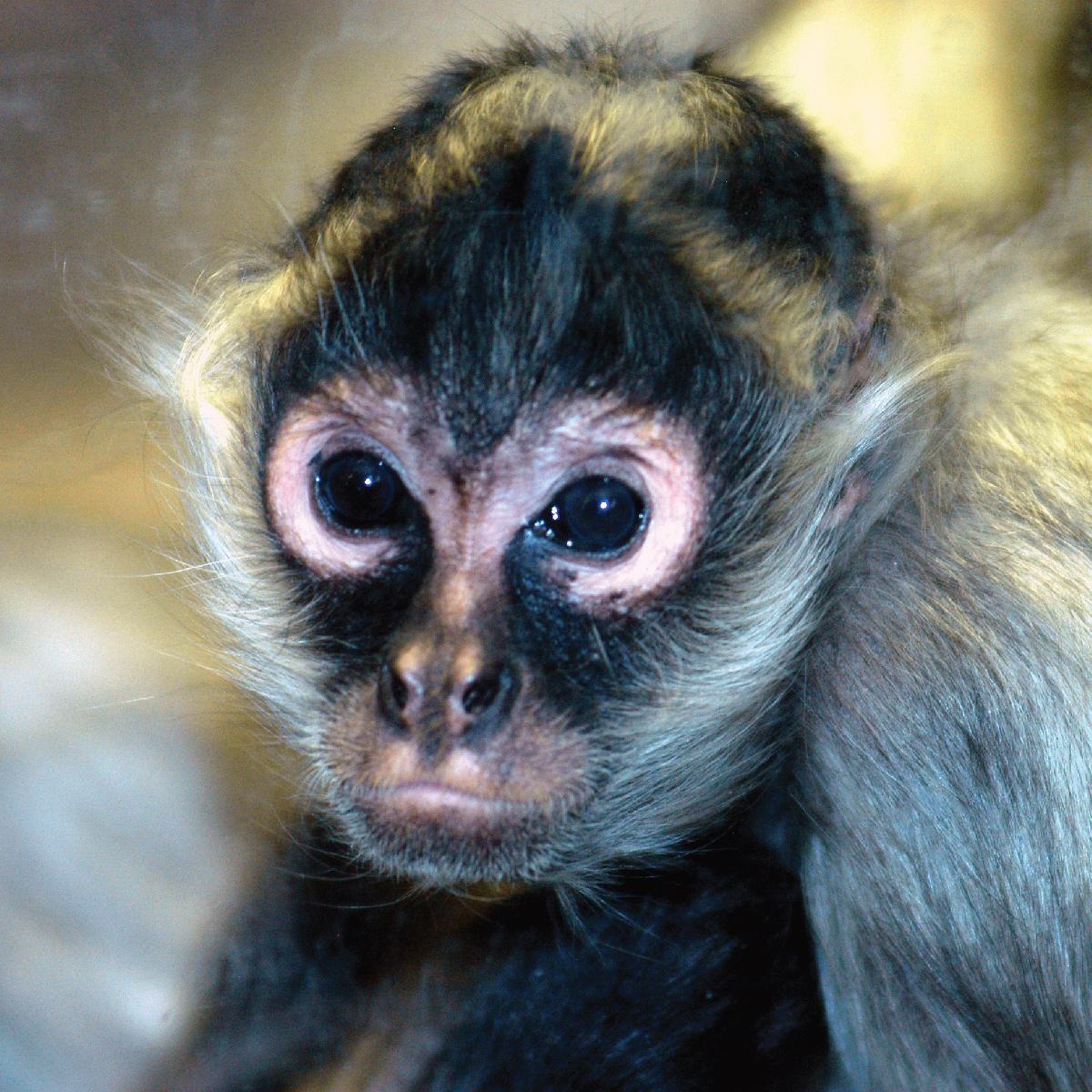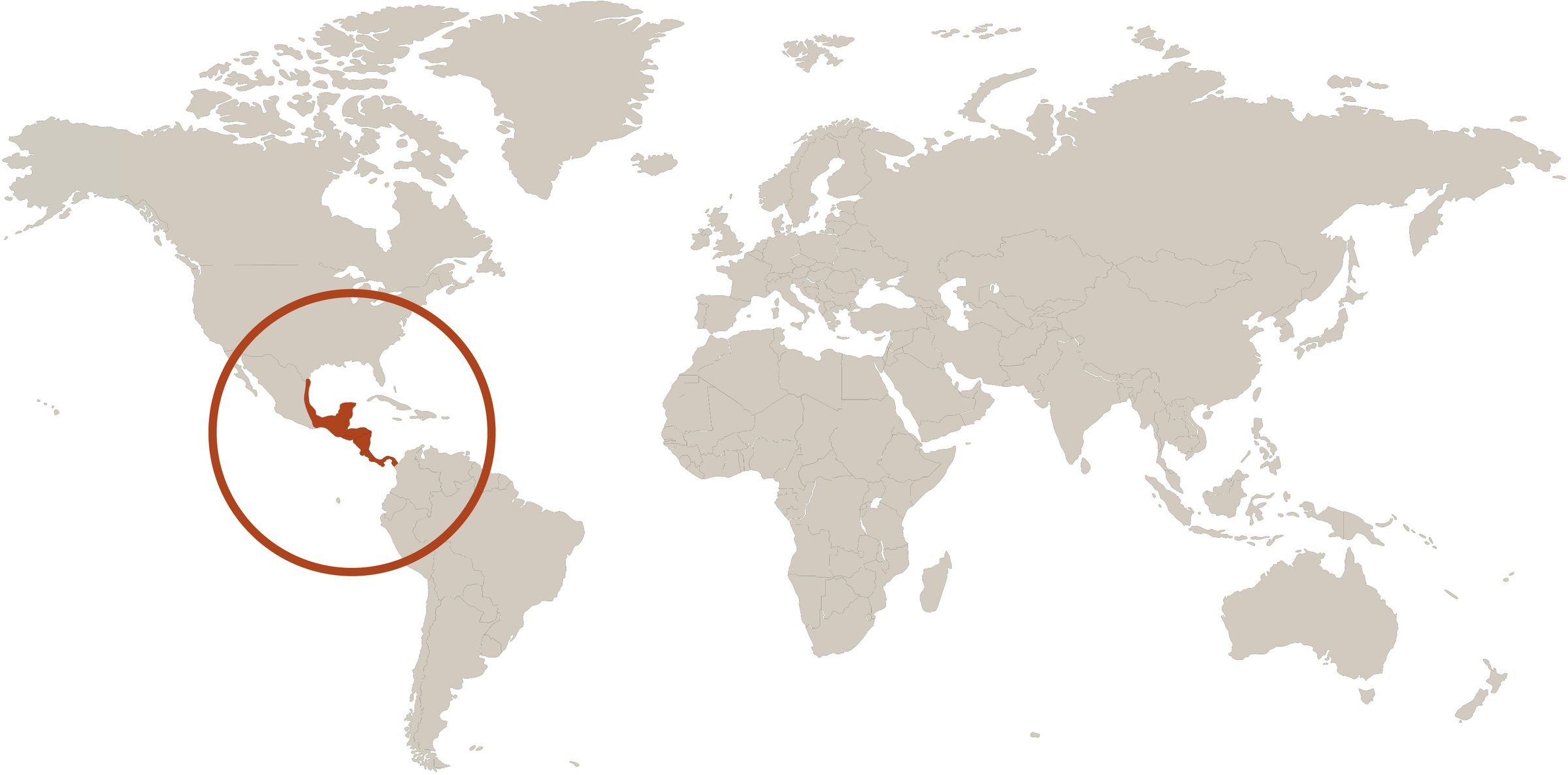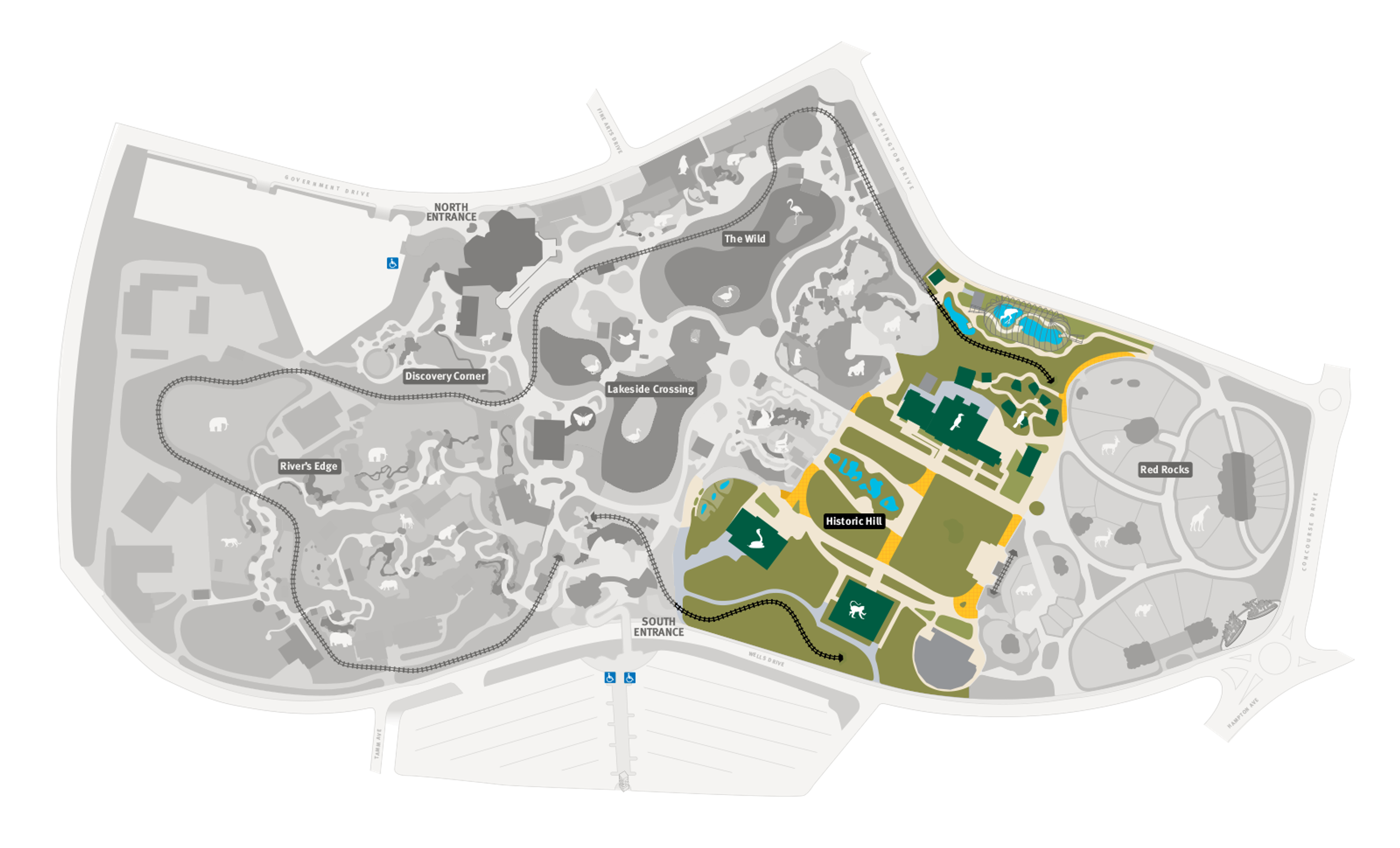
Black-handed Spider Monkey
Ateles geoffroyi
Did you know?
- The black-handed spider monkey is part of the Atelidae family, which it shares with the howler monkey and other primates that have prehensile tails.
- They live in forests in southern Mexico and Central America.
- They are one of the largest New World monkeys, weighing about 20 pounds (about 9 kilograms).
- The species eats mainly fruits and seeds.
- Typically, after a pregnancy of about 7.5 months, a female will have one baby.
Prehensile Tail
Black-handed spider monkeys have prehensile (grasping) tails, with which they use to grab items and hang from branches. This characteristic is fairly uncommon among primates and is found only in certain New World monkeys. Spider monkeys will use their tail as a safety feature while climbing; it will hang onto branches like a safety rope. The tips of their tails have prints that are unique to each individual, similar to a human’s fingerprint.
Social Communication
Spider monkeys have a highly developed larynx, giving them the ability to produce a wide range of calls, from bird-like chirps to barking and grunting. They use a range of vocal sounds to communicate and bond with members of their family. The size of a family group can vary greatly, some even reaching 100 members. But large social groups frequently break up into subgroups.
Threat Level
- Unknown
- Common
- Near Threatened
- Threatened
- Endangered
- Critically Endangered
- Extinct in the Wild
Endangered
The Black-handed Spider Monkey faces a very high risk of extinction in the wild.
Range
Southern Mexico and Central America
Habitat
Forests

We care about black-handed spider monkeys
The Saint Louis Zoo participates in the Species Survival Plan for spider monkeys. This is a cooperative breeding program, with a number of zoos working together to ensure the survival of the species. We also support a family of spider monkeys at the Zoo. Learn more about how we are helping conservation around the world.
Find this animal in Historic Hill

SAINT LOUIS ZOO ZONE
Historic Hill
Historic Hill is a lovely stroll through one of the oldest parts of the Saint Louis Zoo. From the 1904 World’s Fair Flight Cage to the Spanish architectural flavor of the 1920s in the Bird House, Primate House and Herpetarium to the finishing touches of our thoroughly modern exhibits, this area of the Zoo has a unique ambiance and a nostalgic history that make it a great destination.

